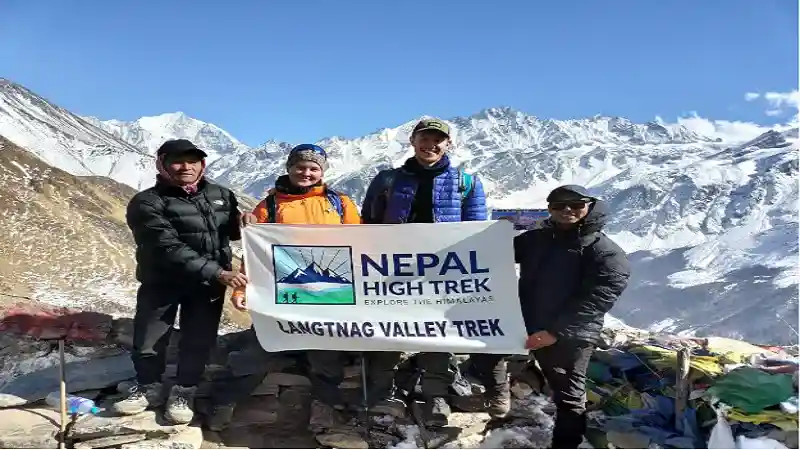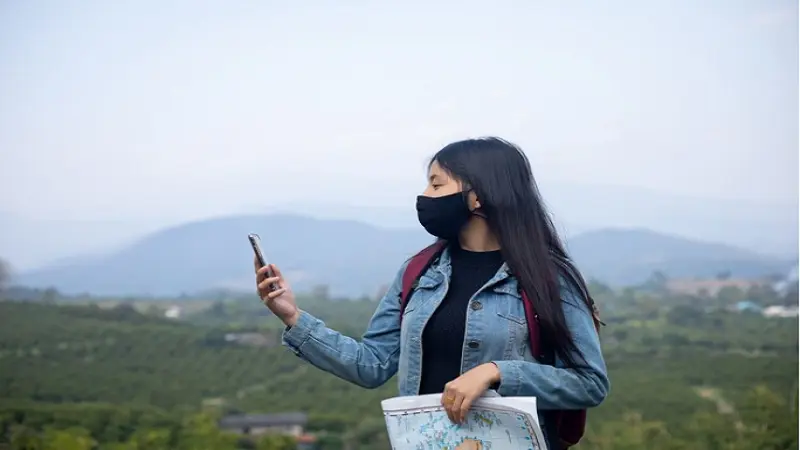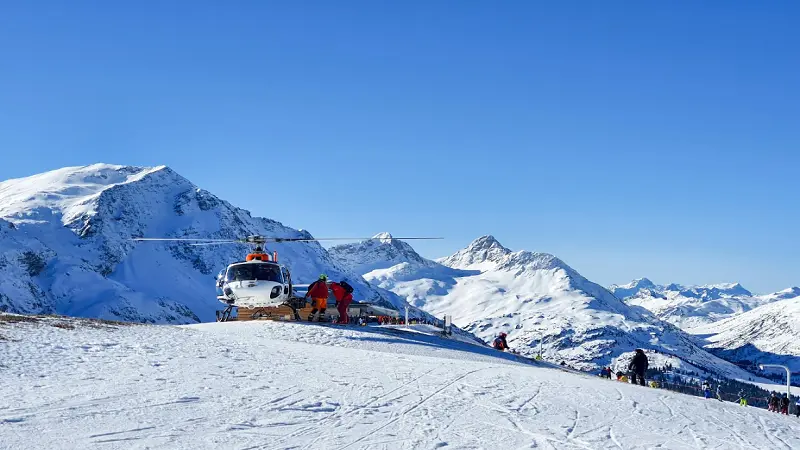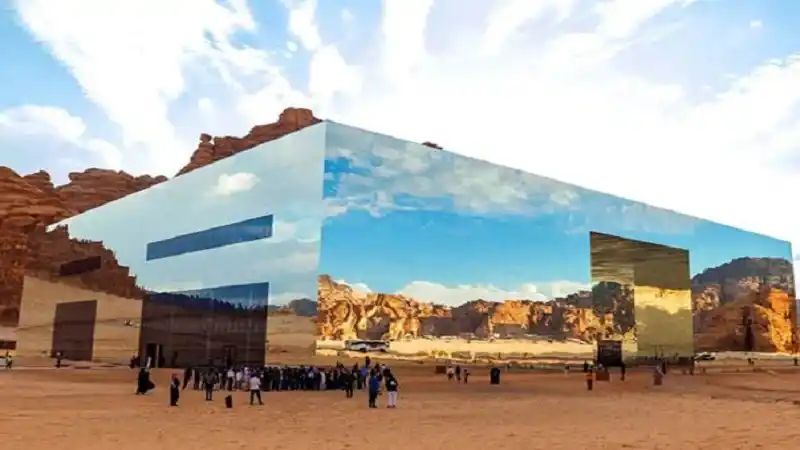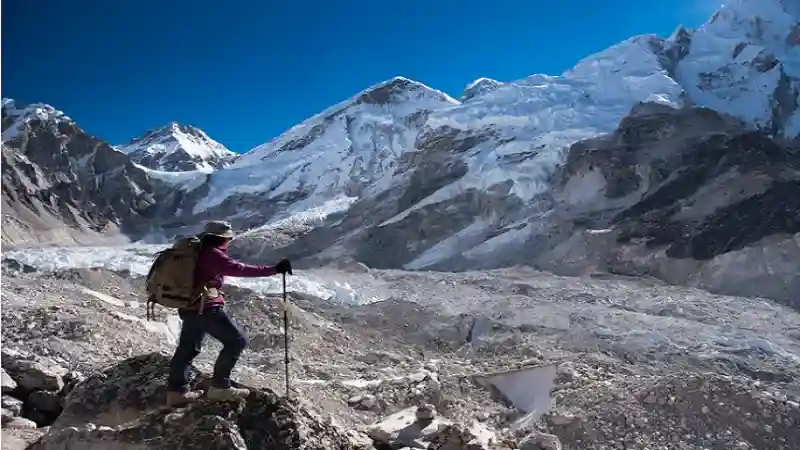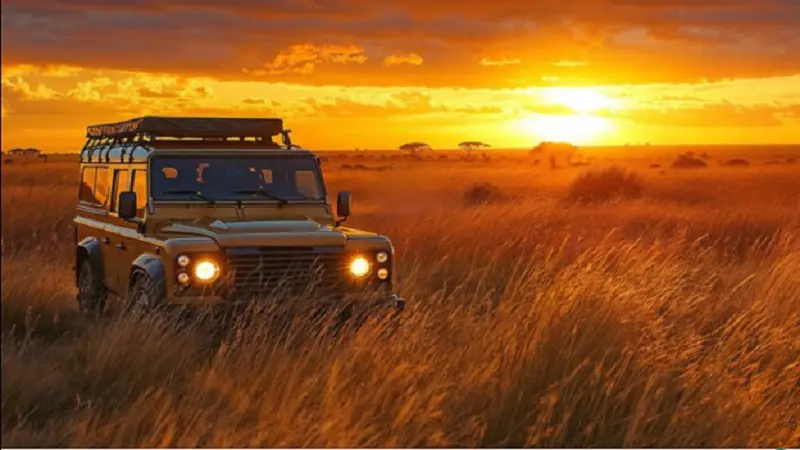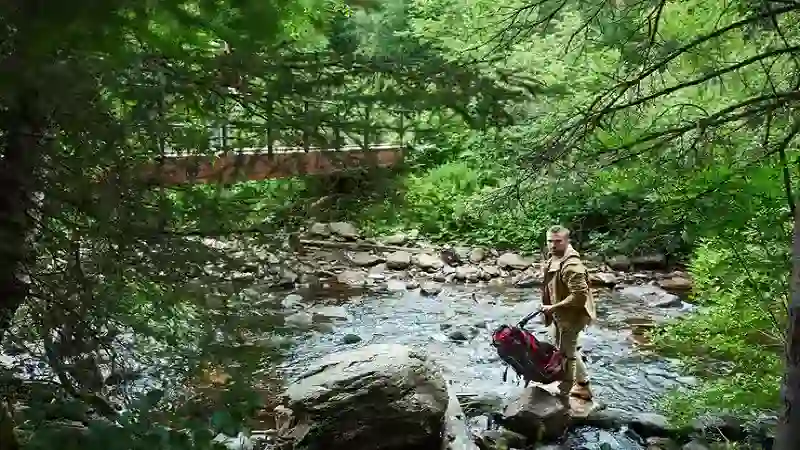In the Langtang Valley trek, you will be involved in a mesmerizing journey through the appealing scenes and socially lively landscape of the Langtang locale in Nepal. This trek is eminent for its pleasant view, engaging Tamang towns and tranquil trails, advertising a calm elude from the hustle and flurry of day-to-day city life. Compared to its more famous partner, the Everest Base Camp trek, the Langtang course is popular for its calmer ways and a hint of involvement with nature and nearby culture.
On the other hand, the Everest Base Camp trek is the most sought-after experience that draws trekkers to the exceptional foothills of the world’s tallest mountain, Mount Everest, standing magnificently at an elevation of 8848.46 meters. This amazing trek presents overpowering views of the tall standing Himalayan crests, encompassing globetrotters in a breathtaking scene of nature’s charisma. Moreover, the travel gives a wealthy submersion into the special culture and conventions of the popular Sherpa community, advertising impressions into their way of life amid the covered-up magnificence of the mountains.
Scenery and Landscape: Langtang Valley Trek VS Everest Base Camp Trek
The Langtang Valley is eminent for its green woodlands, conventional Tamang town, and the excellent Langtang Himalayan extend. Trekkers walk through colorful rhododendron woodlands, serene bamboo forests, and untainted snow-capped pastures with all-encompassing views of different Himalayan crests like Langtang Lirung, Ganesh Himal, Langshisha, and other tall Himalayan peaks.
On the opposite, the Everest Base Camp trek offers breathtaking views of a few of the planet’s most noteworthy mountains, including Everest, Lhotse, and Nuptse. The scene on the Khumbu locale to EBC is characterized by unpleasant landscapes, frosty mountains, and emotional snow-capped sees, giving an exceptional journey through the heart of the Himalayas.
The Langtang Valley trek offers astute knowledge of the wealthy variety of Tamang and Tibetan societies. Along the path, trekkers experience old religious communities, main dividers brightened with supplication banners and turning supplication wheels, inundating themselves in the otherworldly soul of the Langtang region.
In contrast, the Everest Base Camp trek gives an intriguing glimpse into Sherpa culture, with visits to popular religious communities like Tyangboche and enthusiastic towns like Namche Bazaar. Despite being more impacted by tourism, the EBC trek still offers true social encounters and glimpses of the breathtaking Himalayan landscape.
The Langtang Valley trek is for the most part considered a direct trek, with the most noteworthy point coming to Tserko Ri at roughly 5,000 meters. The height pick-up is progressive, making it reasonable for trekkers with direct wellness levels.
In differentiation, the Everest Base Camp trek poses more noteworthy challenges due to higher elevations, with the base camp arranged at 5,364 meters. The travel to EBC includes a few soak risings and plummets, requiring great physical wellness and appropriate acclimatization to attempt to minimize the dangers of getting elevation-related sickness.
Duration: Langtang Valley Trek vs. Everest Base Camp Trek
The Langtang Valley trek regularly ranges around 8 days, advertising a shorter but similarly fulfilling trekking encounter. This makes it a perfect choice for those with time limitations.
On the other hand, the Everest Base Camp trek requires around 14 days in total, counting acclimatization days. Whereas it requests a longer commitment, the travel offers a comprehensive investigation of the Khumbu locale, Sagarmatha National Stop, and its magnificent landscapes.
Accessibility and Crowds: Langtang Valley Trek vs. Everest Base Camp Trek
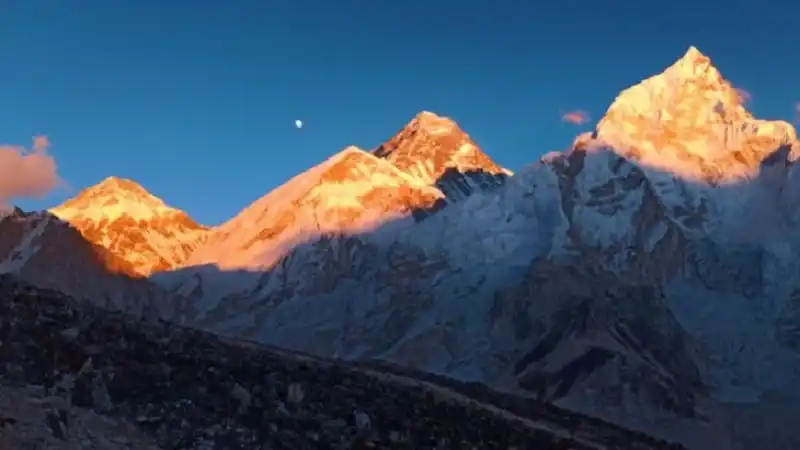
The path is less common, giving a calm and single trekking involvement amid the unwinding magnificence of the Langtang region.
In contrast, the Everest Base Camp trek starts with a flight to Lukla, followed by a trek through the active trails of the Khumbu locale. As one of the most well-known treks in the world, anticipate bigger swarms and busier trails along the route.
Physical Fitness: Langtang Valley Trek VS Everest Base Camp Trek
Preparation for the Langtang Valley trek requires direct physical wellness, with customary cardio workouts, quality preparation, and a few climbing honed. The trek highlights gentle climbs and plunges, making it open to trekkers with a sensible level of fitness.
Equally, the Everest Base Camp trek requests higher physical wellness due to more prominent height and longer length. Seriously, cardio, quality preparation, continuance workouts, and elevation preparation are basic for handling the challenges of this incredible trek.
Cost: Langtang Valley Trek VS Everest Base Camp Trek
In terms of cost, the Langtang Valley trek is, for the most part, more budget-friendly compared to the Everest Base Camp trek. This is basically due to lower allowed costs, no prerequisite for flights, and generally diminished costs on convenience and food.
On the other hand, the Everest Base Camp trek includes higher costs due to the flight to Lukla, higher allowed expenses, and expanded costs on nourishment and settlement along the trail.
Highlights: Langtang Valley Trek VS Everest Base Camp Trek
The Langtang Valley trek is well known for its dazzling valley sees, social points of interest such as Kyanjin Gompa, tall sea points like Tsergo Ri, different greenery and fauna, and popular cheese from Langtang.
In differentiation, the Everest Base Camp trek offers highlights counting unparalleled views of Everest, Kala Patthar, Tyangboche Cloister, Khumbu Icy Mass, and the prestigious accomplishment of coming to the base camp of the world’s most noteworthy peak.
Packing Requirements: Langtang Valley Trek vs. Everest Base Camp Trek
For the Langtang Valley trek, pack lightweight, breathable clothing reasonable for lower heights, along with warm layers for higher heights. Fundamentals incorporate a downy or down coat, waterproof external shell, speedy drying trekking pants, and dampness-wicking base layers. Don’t disregard tough trekking boots, trekking posts, and sun assurance gear.
Similarly, for the Everest Base Camp trek, pack comparative clothing with extra warm layers and warm clothing and protect pants for extraordinary cold. Prioritize tall quality and protect trekking boots and gaiters for frosty landscapes if trekking around the winter season. Don’t disregard elevation ailments avoidance measures like Diamox and oximeters.
Best Season: Langtang Valley Trek vs. Everest Base Camp Trek
The Langtang Valley Travel and the Everest Base Camp Travel both offer energizing experiences around the Himalayan scenes, but the ideal seasons for trekking change to some degree between the two.
For Langtang Valley Travel, the perfect seasons are spring (Walk to May) and gathering time (September to November). In spring, trekkers can expect clear skies, tender temperatures, and colorful rhododendron blooms along the trail.
The consistent climate conditions make this season ideal for getting a charge out of all the enveloping seas of the Langtang district and its enveloping peaks. Moreover, harvest time offers comparative benefits, with fresh flowers, brilliant foliage, and fewer swarms compared to the top season. Trekking during these months gives a serene involvement, permitting climbers to submerge themselves completely in the characteristic excellence of the Langtang Valley. In spring, trekkers can appreciate mellow temperatures, clear skies, and the grand excellence of blooming rhododendrons and other greenery along the path. This season offers breathtaking views of the Everest locale without the swarms ordinarily found amid the top season.
Similarly, harvest time presents favorable climate conditions, making it an amazing time to trek to Everest Base Camp. With a steady climate, and fresh discussion, but with a higher number of trekkers on the trails.
Safety: Langtang Valley Trek VS Everest Base Camp Trek
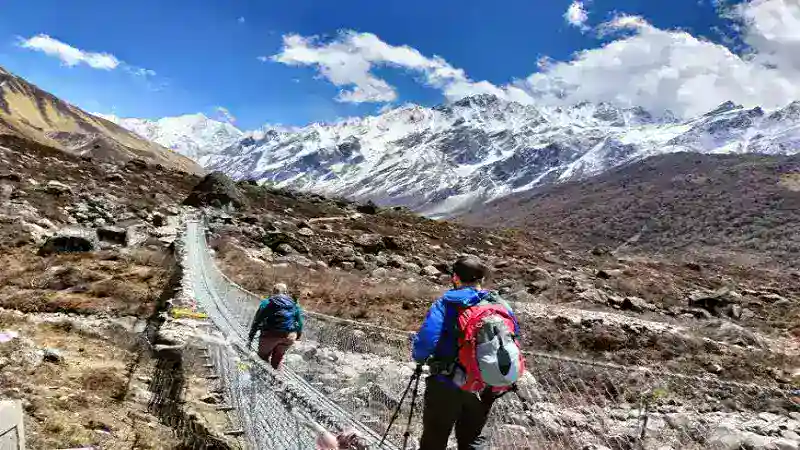
The Langtang Valley trek is for the most part considered secure, but there are a few variables to keep in mind. The path passes through farther regions with restricted access to restorative offices, so it’s basic for trekkers to be arranged with a well-supplied to begin to help pack and have essential information of the wild to begin with aid.
Additionally, climate conditions in the Langtang locale can be unusual, particularly amid the storm season (June to Admirable), which may lead to avalanches or torrential slides in certain zones. Trekkers ought to remain overhauled on climate estimates and be arranged to alter their plans accordingly.
While experiences with natural life are uncommon, it is fitting to take safety measures such as putting away nourishment appropriately and maintaining a strategic distance from nourishing or drawing closer wild animals.
Similarly, the Everest Base Camp trek is by and large considered secure for those who are well arranged and take after legitimate security conventions. In any case, height-related illnesses, such as Intense Mountain Ailment (AMS), are a critical concern due to the tall heights along the trekking route.
Trekkers must acclimatize appropriately by climbing steadily and permitting time for their bodies to alter to the decreased oxygen levels at higher heights.
Conclusion
Ultimately, the choice between the Langtang Valley trek and the Everest Base Camp trek depends on your inclinations, wellness level, time accessibility, and budget.
Go for the Langtang Valley trek if you incline toward a shorter, less swarmed trek with wealthy social encounters and different scenes, particularly if it’s your, to begin with every trek in Nepal and you don’t have much encounter of tall elevation trekking.
It is perfect for trekkers with direct wellness levels looking for a quiet environment amid the breathtaking magnificence of the Langtang locale.
Contact Nepal High Trek
Nepal High Trek And Expedition Pvt. Ltd. is an authentic local trekking company based in Kathmandu, Nepal, specializing in multi-day tours, treks, climbing, and other related activities for solo travelers and private groups. You can contact us at info@nepalhightre.com or via WhatsApp at +977-9851142116.
